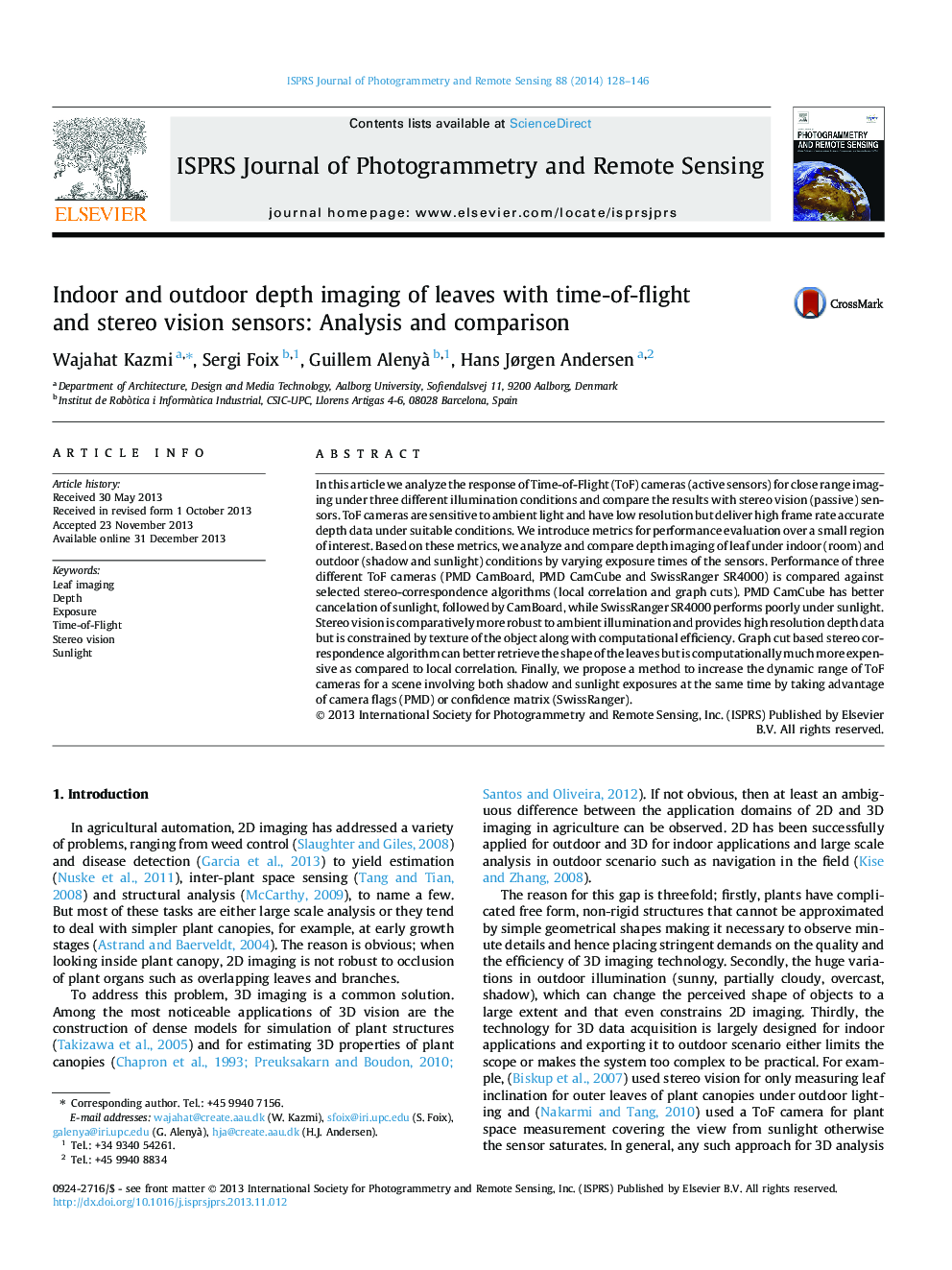| Article ID | Journal | Published Year | Pages | File Type |
|---|---|---|---|---|
| 6949734 | ISPRS Journal of Photogrammetry and Remote Sensing | 2014 | 19 Pages |
Abstract
In this article we analyze the response of Time-of-Flight (ToF) cameras (active sensors) for close range imaging under three different illumination conditions and compare the results with stereo vision (passive) sensors. ToF cameras are sensitive to ambient light and have low resolution but deliver high frame rate accurate depth data under suitable conditions. We introduce metrics for performance evaluation over a small region of interest. Based on these metrics, we analyze and compare depth imaging of leaf under indoor (room) and outdoor (shadow and sunlight) conditions by varying exposure times of the sensors. Performance of three different ToF cameras (PMD CamBoard, PMD CamCube and SwissRanger SR4000) is compared against selected stereo-correspondence algorithms (local correlation and graph cuts). PMD CamCube has better cancelation of sunlight, followed by CamBoard, while SwissRanger SR4000 performs poorly under sunlight. Stereo vision is comparatively more robust to ambient illumination and provides high resolution depth data but is constrained by texture of the object along with computational efficiency. Graph cut based stereo correspondence algorithm can better retrieve the shape of the leaves but is computationally much more expensive as compared to local correlation. Finally, we propose a method to increase the dynamic range of ToF cameras for a scene involving both shadow and sunlight exposures at the same time by taking advantage of camera flags (PMD) or confidence matrix (SwissRanger).
Related Topics
Physical Sciences and Engineering
Computer Science
Information Systems
Authors
Wajahat Kazmi, Sergi Foix, Guillem Alenyà , Hans Jørgen Andersen,
